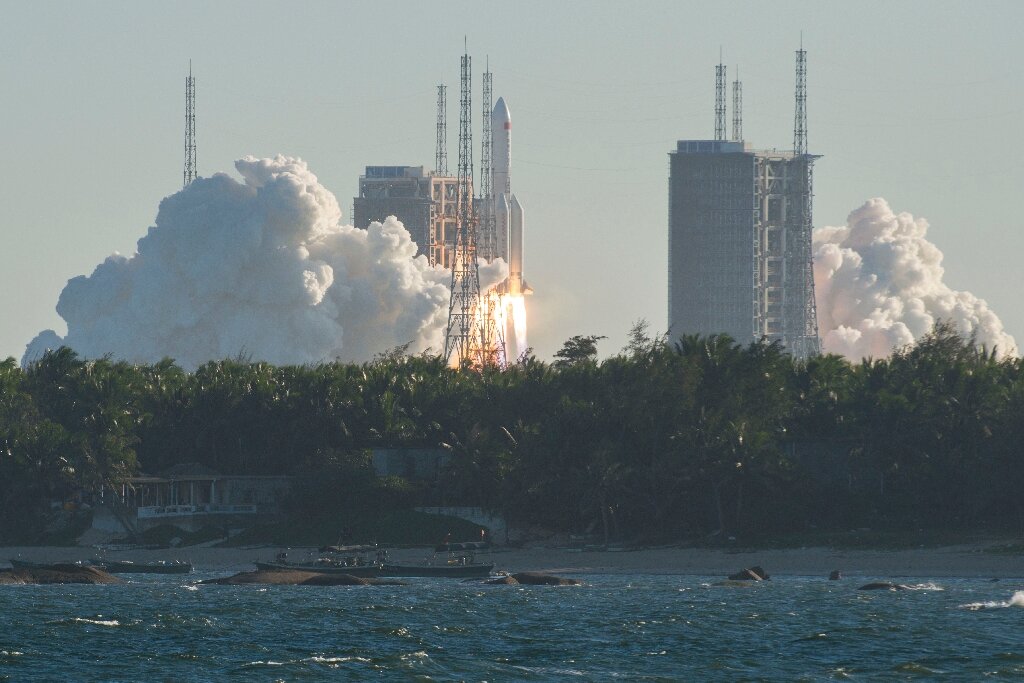The cargo capsule was launched Tuesday aboard a new type of carrier rocket along with a prototype spacecraft.
A cargo capsule that was part of a key test in China’s space programme experienced an “anomaly” Wednesday during its return trip, the space authority said.
The cargo capsule was launched Tuesday aboard a new type of carrier rocket along with a prototype spacecraft, and the latter is expected to return to Earth on Friday.
The launch is a major test of China’s ambitions to operate a permanent space station and send astronauts to the Moon.
But “an anomaly occurred today during the return” of the cargo capsule, the China Manned Space Agency said in a statement.
“Experts are currently analysing the data,” it said without offering details.
The cargo capsule was not designed to transport astronauts, only equipment. The device, developed by China Aerospace Science and Industry Corporation, is an experimental prototype.
The capsule was fitted with an “inflatable” heat shield. This type of structure, also being tested by the American and European space agencies, aims to eventually replace the classic metal heat shields that are heavier and thereby reduces the amount of cargo that can be carried into space.
Tuesday’s launch was also the maiden flight of the Long March 5B rocket, considered the most powerful rocket made in China to date. State media said the launch was a “success”.
It comes after two previous failures when the Long March 7A malfunctioned in March and the Long March 3B failed to take off in early April.
Beijing has invested heavily in its space programme in recent years as it plays catchup to the United States, the only country to have sent a man to the Moon.
Assembly of the Chinese Tiangong space station, whose name means Heavenly Palace, is expected to begin this year and finish in 2022.
China also became the first nation to land on the far side of the Moon in January 2019, deploying a lunar rover that has driven some 450 metres so far.













![Hotstar Premium Cookies 2019 [*100% Working & Daily Updated*] Hotstar Premium Cookies 2019 [*100% Working & Daily Updated*]](https://tahav.com/wp-content/uploads/2019/11/Hotstar-Premium-Cookies-Free-100x70.jpg)



